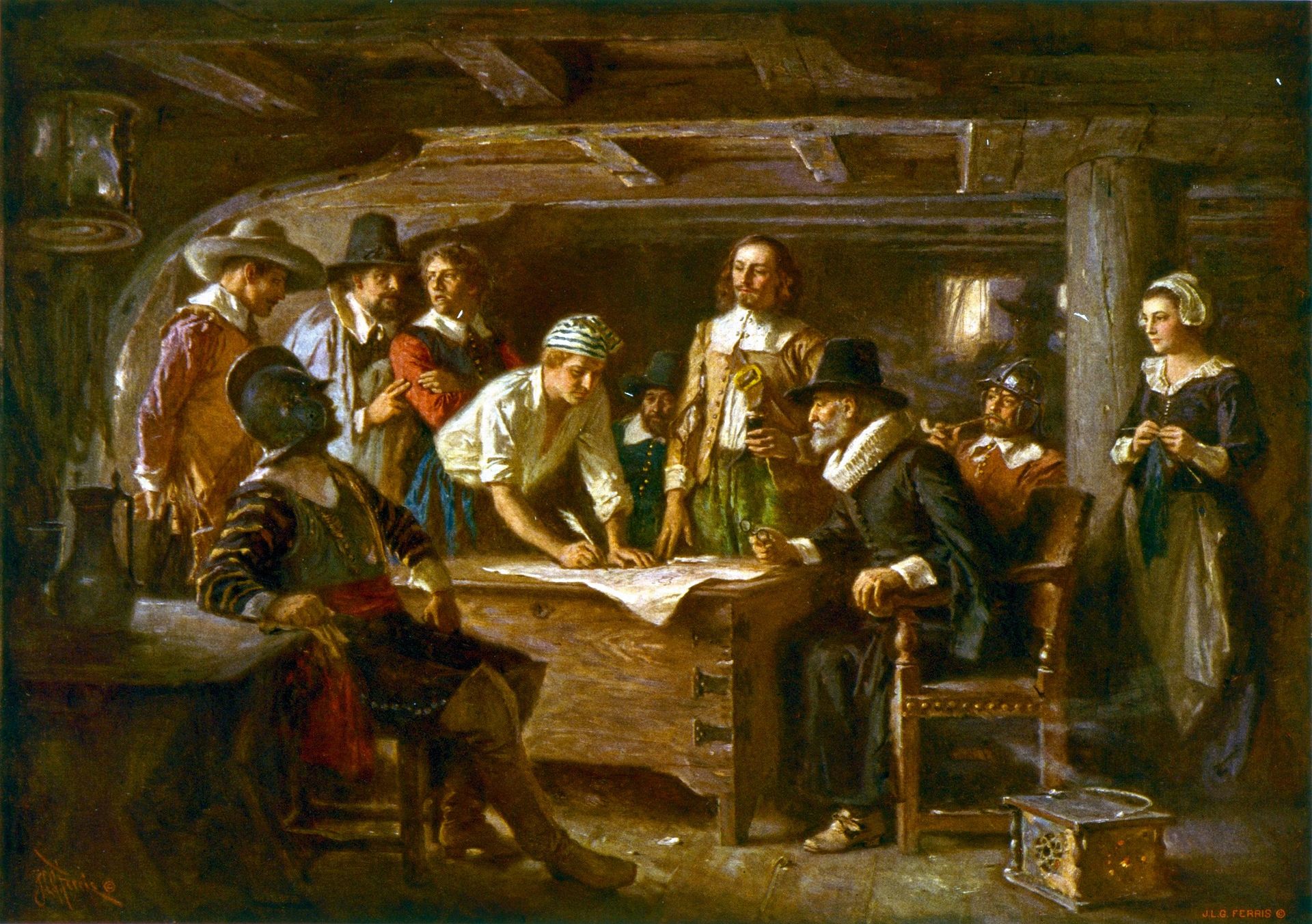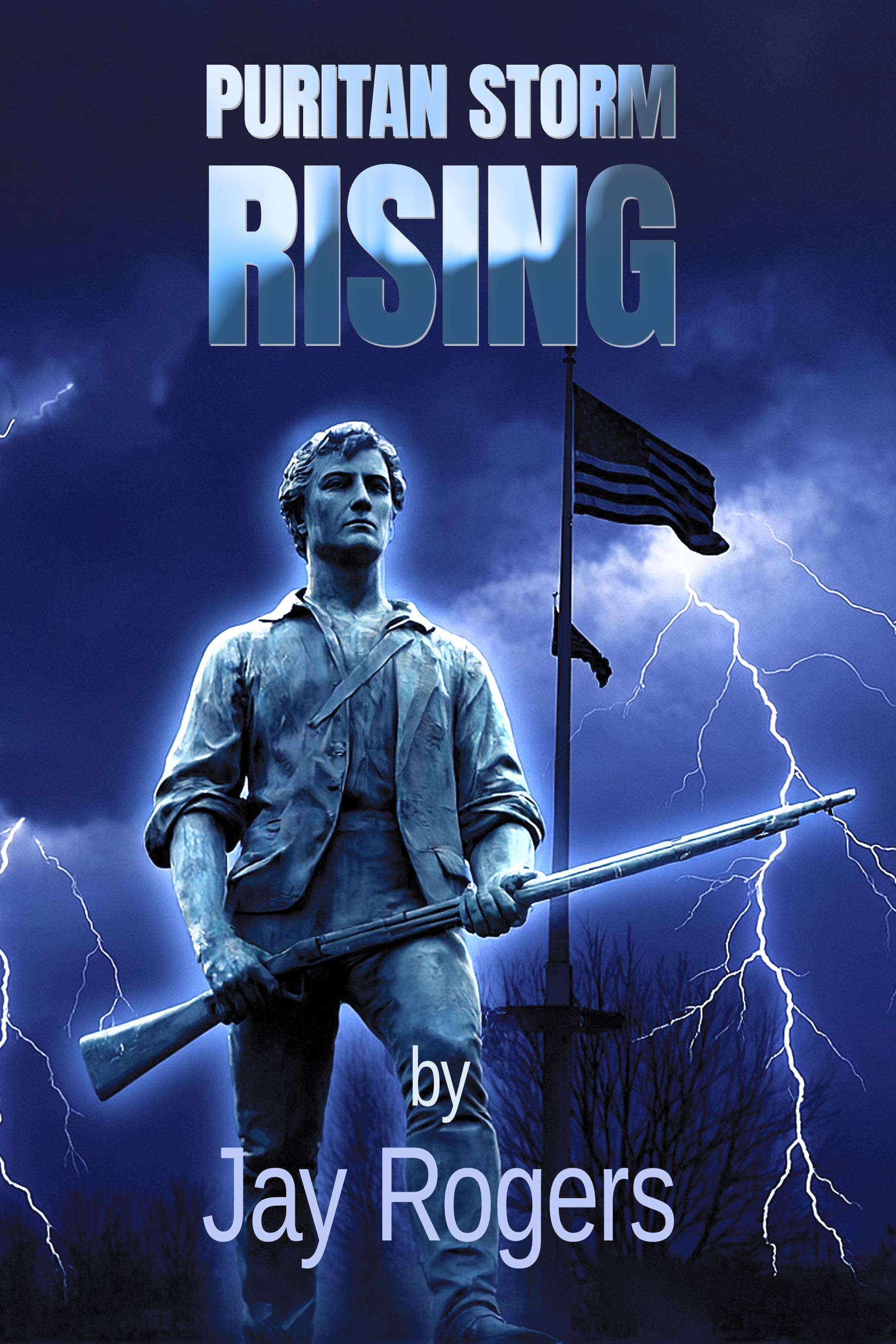Did the Pilgrims almost fail in 1621 when they “tried socialism”?
This is a frequent trope that is often trotted out by conservative and libertarian political pundits around Thanksgiving. It seems to have its origin in a 1968 column by Henry Hazlitt at the height of the Cold War. The idea is that when the Pilgrims landed in Plymouth in 1620, the first governor, John Carver, had planned a communist utopia in the New World. This soon failed when the colonists became lazy and starvation and death resulted. Finally after Carver and more than half of the colonists had died, a wiser Governor William Bradford decided to make each household produce their own stock of food from farming their own lots of land. From then on, the Pilgrims prospered. “Let us be thankful for this valued lesson from our Fathers — and yield not to the temptations of socialism,” concluded Hazlitt. So goes the anti-socialist story. Numerous others have repeated this legend, including Rush Limbaugh, John Stossell, and George Will.

Although there is a grain of truth in this tale, the main problem is the timeline. Yes, the Pilgrims starved in the first few months after landing in Plymouth in December 1620. Many contracted scurvy, a vitamin deficiency common among seafarers, while still aboard the Mayflower. To compound the problem, the ship had been blown off course by storms and they settled in a more northerly and colder part of the eastern seaboard, when an unusually harsh winter was setting in. Carver set up a system of rations from the remaining stocks of food. In the spring, the remaining Pilgrims, little more than half of the original 102 colonists, worked together to farm a common lot. However, by the time what has become known as the first Thanksgiving in the fall of 1621 occurred, there was an abundance of food. Bradford describes in his text, Of Plimoth Plantation, the fall harvest celebration, a three-day feast shared with the Wampanoag, featuring activities like “fowling” (hunting) and games. While Bradford doesn’t explicitly use the term “Thanksgiving” in this context, he notes that the colonists set aside days for both humiliation and rejoicing in God’s blessings. The celebration included a significant number of Wampanoag guests, including their leader, King Massasoit, and his men. Far from the first year being a failed experiment with communism, Bradford instead describes an abundance just months after the “Starving Time.”
They began now to gather in the small harvest they had, and to fit up their houses and dwellings against winter, being all well recovered in health and strength and had all things in good plenty. For as some were thus employed in affairs abroad, others were exercised in fishing, about cod and bass and other fish, of which they took good store, of which every family had their portion. All the summer there was no want; and now began to come in store of fowl, as winter approached, of which this place did abound when they came first (but afterward decreased by degrees). And besides waterfowl there was great store of wild turkeys, of which they took many, besides venison, etc. Besides, they had about a peck of meal a week to a person, or now since harvest, Indian corn to that proportion. Which made many afterwards write so largely of their plenty here to their friends in England, which were not feigned but true reports.
From the first summer in 1621 onward, the Plymouth colony had no lack of food. The grain of truth in the “Pilgrims’ failed experiment with socialism” legend comes from a decision of Bradford to cease the practice of farming a common plot of land and holding all the produce in a storehouse. By 1623, this system, called the “common course,” was “found to breed much confusion and discontent and retard much employment … [f]or the Young men, that were most able and fit for labour and service, did repine that they should spend their time and strength to work for other men’s wives and children without any recompense.” Afterward every family was assigned its own parcel of land to farm, “this had very good success, for it made all hands very industrious, so as much more corn was planted than otherwise would have been.”
According to the contract the Plymouth Company held, for the first seven years of the colony all goods were to be held in joint stock. No land could be legally held by any of the colonists during this time. This was because the colony was an investment venture and the investors expected to be paid first. This was not due to communism, but a nascent capitalism. By this time in history, the “joint stock company” was a common investment system throughout Europe. Bradford’s Plymouth Colony initially held all goods within the common-store (a temporary measure during an emergency situation that averted famine) but abandoned it later when it bred sloth and resentment.
When leftists misappropriate and denigrate Puritan history in such a way as to tarnish our great American Christian legacy in favor of their “woke” social justice agenda, it should irk us. However, we ought not commit the same error by failing to notice nuance in details of the historical record and bend it to our own ends.
We can derive from this experience the lesson that governance ought to be moral, not coercive. The Pilgrim colony teaches us that lasting reform comes through changed hearts, not forced equality. A 21st-century Reformation must reject both libertine individualism and forced collectivism in favor of a voluntary Christian order. Bradford’s model is explicitly Christocentric – love, not law, binds society. Modern reformers should focus on discipleship, not political coercion, recognizing that only the Gospel transforms culture from within. Love must reign as a principle for caring for those in need.
The Significance of the Mayflower Compact
In 1636, the Pilgrims began to compile their constitution, “for the ordering of a body politic” that consisted of the laws that would govern them as stipulated in the 1620 Mayflower Compact. The model of having a declaration of where your rights come from and then a set of bylaws that protect those rights then became the pattern for all of New England. This became the pattern for the Fundamental Orders of Connecticut, the Massachusetts Body of Liberties and later, the Declaration of Independence and U.S. Constitution. When examining the legal foundations of Puritan New England – particularly beginning with the Pilgrims – it’s important to recognize two key aspects of their governing framework.
First, the Compact, written aboard the Mayflower, was established when the Pilgrims found themselves outside their original governance and needed to exercise self-rule.
Second, this document served as a foundational charter, much like the basis for a nation. It articulated not only the source of their rights but also their philosophy of law.
Interestingly, England never recognized the Mayflower Compact as legitimate. A year later, the Pierce Patent was imposed, asserting greater centralized control over the colony. Yet the Pilgrims continued governing themselves by the Compact, citing it as the preamble to their law books throughout the 1600s. In England’s eyes, they were operating outside proper authority, but the Pilgrims upheld their self-governing principles regardless.
Sixteen years later, in 1636, the Pilgrims formalized their constitution – a set of bylaws built upon the Mayflower Compact’s principles. This became a model for all of New England, declaring that rights flowed from God to the people, and then to their leaders – a power structure later echoed in the Declaration of Independence. In contrast, England’s model placed authority from God to the monarch, then to the people.
The Fundamental Orders of Connecticut (1639) was established by those who left Boston and John Winthrop’s leadership, further refined this idea. Rooted in sermons from Deuteronomy and Exodus, they reinforced the same power structure: God → the people → their leaders. Connecticut’s system introduced a republican form of representation, with sovereign town delegations and proportional population-based voting – laying another foundational stone for the US Constitution.
The Fundamental Orders of Connecticut also established a clear dual system of government, combining both proportionate representation by population and sovereign representation by town units. This innovative framework earned Connecticut its nickname as “the Constitution State.” The legacy continued when Roger Sherman broke the deadlock at the Constitutional Convention in 1787 by proposing a model based on Connecticut’s system – an approach originally recommended by a 29-year-old Noah Webster in his “Sketches of American Policy” presented to George Washington.
While the Fundamental Orders represented a more advanced political philosophy, it’s important to note the evolutionary progression from the Mayflower Compact. When the Pilgrims drafted their compact in 1620, they still operated within an English framework, despite England’s rejection of the document. By contrast, Connecticut’s 1639 Fundamental Orders emerged from a freer intellectual environment that allowed simultaneous development of both charter principles and practical bylaws – unlike the Pilgrims’ 16-year gap between their compact and formal constitution.
The Massachusetts Body of Liberties (1641) codified many biblical laws, initially adopting nearly all of Israel’s civil statutes from the Old Testament. However, by the time of the Westminster Confession (1640s), theologians distinguished between laws binding for ancient Israel and those applicable to modern society.
Gradually, jurisdictional separation of church and state emerged, alongside the development of three governmental branches. There’s no question: Connecticut’s Fundamental Orders, the Massachusetts Body of Liberties, and other New England documents became the seeds for both the Declaration of Independence and the US Constitution. These documents demonstrate a developing American political philosophy, with Connecticut’s system particularly noteworthy for its influence.
The Mayflower Compact acknowledged the right of everyone who signed it to share in the making and administering of laws and the right of the majority to rule. It was the constitution of a pure democracy, the principle of Congregational church government applied to the state. This was all the law they had for several years. It worked because they chose Christians as their leaders and all understood that they were to be self-governing under the moral law of God.







